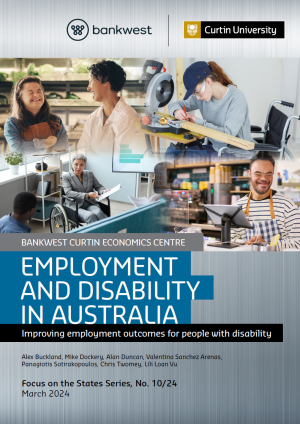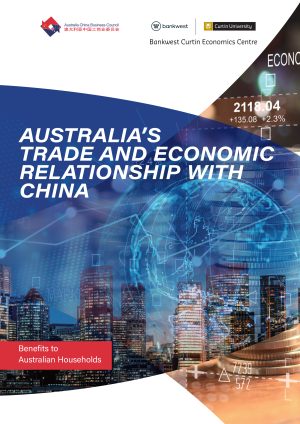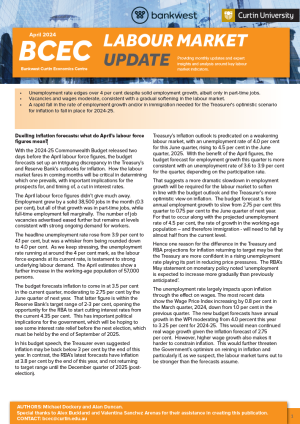Publications
Can measures of broadband infrastructure improve predictions of economic growth?
 This paper investigates whether predictions of future economic growth can be improved by using standard measures of broadband infrastructure. The investigation is carried out by comparing the predictive accuracy of dynamic panel models of economic growth estimated with and without... Read article
This paper investigates whether predictions of future economic growth can be improved by using standard measures of broadband infrastructure. The investigation is carried out by comparing the predictive accuracy of dynamic panel models of economic growth estimated with and without... Read article
 This paper investigates whether predictions of future economic growth can be improved by using standard measures of broadband infrastructure. The investigation is carried out by comparing the predictive accuracy of dynamic panel models of economic growth estimated with and without... Read article
This paper investigates whether predictions of future economic growth can be improved by using standard measures of broadband infrastructure. The investigation is carried out by comparing the predictive accuracy of dynamic panel models of economic growth estimated with and without... Read article
Housing affordability dynamics: new insights from the last decade
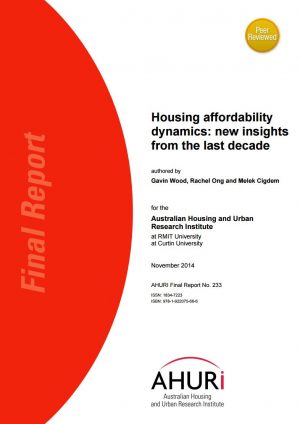 This report, funded by the Australian Housing and Urban Research Institute (AHURI), explores the duration of housing affordability stress (HAS) in Australia. It tracks the housing affordability trajectories of Australians over the period 2001–11. The dataset employed in this project... Read article
This report, funded by the Australian Housing and Urban Research Institute (AHURI), explores the duration of housing affordability stress (HAS) in Australia. It tracks the housing affordability trajectories of Australians over the period 2001–11. The dataset employed in this project... Read article
 This report, funded by the Australian Housing and Urban Research Institute (AHURI), explores the duration of housing affordability stress (HAS) in Australia. It tracks the housing affordability trajectories of Australians over the period 2001–11. The dataset employed in this project... Read article
This report, funded by the Australian Housing and Urban Research Institute (AHURI), explores the duration of housing affordability stress (HAS) in Australia. It tracks the housing affordability trajectories of Australians over the period 2001–11. The dataset employed in this project... Read article
Housing Equity Withdrawal in mid-to-late life: Patterns and Motivations amongst Australian Homeowners
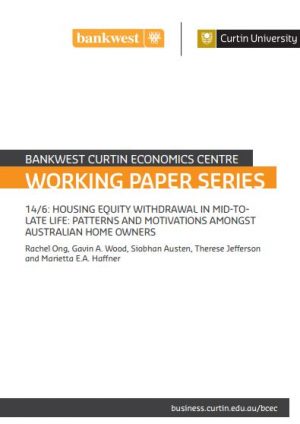 Abstract In an era of population ageing, the primary home is increasingly viewed as a personal resource that can perform a pension role in retirement. This paper assesses the extent to which Australians aged over 45 utilise housing equity withdrawal... Read article
Abstract In an era of population ageing, the primary home is increasingly viewed as a personal resource that can perform a pension role in retirement. This paper assesses the extent to which Australians aged over 45 utilise housing equity withdrawal... Read article
 Abstract In an era of population ageing, the primary home is increasingly viewed as a personal resource that can perform a pension role in retirement. This paper assesses the extent to which Australians aged over 45 utilise housing equity withdrawal... Read article
Abstract In an era of population ageing, the primary home is increasingly viewed as a personal resource that can perform a pension role in retirement. This paper assesses the extent to which Australians aged over 45 utilise housing equity withdrawal... Read article
Falling Through the Cracks
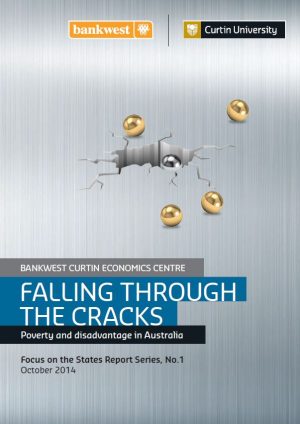 The concept of disadvantage is one that invokes a number of connotations, including poverty, exclusion and deprivation. Generally disadvantage relates to a lack of resources and opportunity to achieve a basic standard of living. A number of Australian studies have... Read article
The concept of disadvantage is one that invokes a number of connotations, including poverty, exclusion and deprivation. Generally disadvantage relates to a lack of resources and opportunity to achieve a basic standard of living. A number of Australian studies have... Read article
 The concept of disadvantage is one that invokes a number of connotations, including poverty, exclusion and deprivation. Generally disadvantage relates to a lack of resources and opportunity to achieve a basic standard of living. A number of Australian studies have... Read article
The concept of disadvantage is one that invokes a number of connotations, including poverty, exclusion and deprivation. Generally disadvantage relates to a lack of resources and opportunity to achieve a basic standard of living. A number of Australian studies have... Read article
Exploring recent increases in the gender wealth gap among Australia’s single households
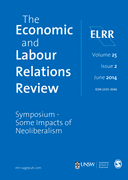 Abstract This study uses three wealth modules from the Household, Income and Labour Dynamics in Australia Survey to explore the gender wealth gap for single Australian households between 2002 and 2010. The findings indicate a significant gender wealth gap, which... Read article
Abstract This study uses three wealth modules from the Household, Income and Labour Dynamics in Australia Survey to explore the gender wealth gap for single Australian households between 2002 and 2010. The findings indicate a significant gender wealth gap, which... Read article
 Abstract This study uses three wealth modules from the Household, Income and Labour Dynamics in Australia Survey to explore the gender wealth gap for single Australian households between 2002 and 2010. The findings indicate a significant gender wealth gap, which... Read article
Abstract This study uses three wealth modules from the Household, Income and Labour Dynamics in Australia Survey to explore the gender wealth gap for single Australian households between 2002 and 2010. The findings indicate a significant gender wealth gap, which... Read article
Workforce and Skills
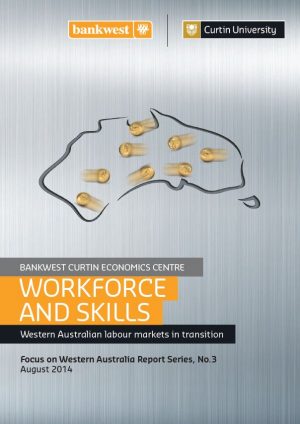 The resources industry has been the driving force behind Western Australia’s remarkable economic trajectory over the last two decades, delivering billions of tonnes of iron ore to steel mills around the world. WA has prospered, wages have soared and unemployment... Read article
The resources industry has been the driving force behind Western Australia’s remarkable economic trajectory over the last two decades, delivering billions of tonnes of iron ore to steel mills around the world. WA has prospered, wages have soared and unemployment... Read article
 The resources industry has been the driving force behind Western Australia’s remarkable economic trajectory over the last two decades, delivering billions of tonnes of iron ore to steel mills around the world. WA has prospered, wages have soared and unemployment... Read article
The resources industry has been the driving force behind Western Australia’s remarkable economic trajectory over the last two decades, delivering billions of tonnes of iron ore to steel mills around the world. WA has prospered, wages have soared and unemployment... Read article
Wellbeing outcomes of lower income renters
 Executive Summary A critical assumption of area-based policies aiming to foster greater ‘social mix’ of communities is that the adverse consequences associated with concentrations of social disadvantage will be reduced. The main vehicle to facilitate contemporary policies of social mix... Read article
Executive Summary A critical assumption of area-based policies aiming to foster greater ‘social mix’ of communities is that the adverse consequences associated with concentrations of social disadvantage will be reduced. The main vehicle to facilitate contemporary policies of social mix... Read article
 Executive Summary A critical assumption of area-based policies aiming to foster greater ‘social mix’ of communities is that the adverse consequences associated with concentrations of social disadvantage will be reduced. The main vehicle to facilitate contemporary policies of social mix... Read article
Executive Summary A critical assumption of area-based policies aiming to foster greater ‘social mix’ of communities is that the adverse consequences associated with concentrations of social disadvantage will be reduced. The main vehicle to facilitate contemporary policies of social mix... Read article
Women in cabinet and public health spending
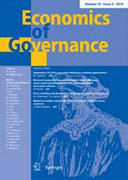 This article studies the effect of women’s cabinet representation on public health policy outcomes. Based on a large sample of countries in the year 2000, the analysis shows that an increase in the share of women in cabinet is associated... Read article
This article studies the effect of women’s cabinet representation on public health policy outcomes. Based on a large sample of countries in the year 2000, the analysis shows that an increase in the share of women in cabinet is associated... Read article
 This article studies the effect of women’s cabinet representation on public health policy outcomes. Based on a large sample of countries in the year 2000, the analysis shows that an increase in the share of women in cabinet is associated... Read article
This article studies the effect of women’s cabinet representation on public health policy outcomes. Based on a large sample of countries in the year 2000, the analysis shows that an increase in the share of women in cabinet is associated... Read article
A Multi-Market Approach to Measuring the Cycle
 At any given moment there are numerous indicators of the state of an economy or sector. Frequently, these signals are divergent, for example, some may point to an expansion, while others to a contraction. We consider how best to combine... Read article
At any given moment there are numerous indicators of the state of an economy or sector. Frequently, these signals are divergent, for example, some may point to an expansion, while others to a contraction. We consider how best to combine... Read article
 At any given moment there are numerous indicators of the state of an economy or sector. Frequently, these signals are divergent, for example, some may point to an expansion, while others to a contraction. We consider how best to combine... Read article
At any given moment there are numerous indicators of the state of an economy or sector. Frequently, these signals are divergent, for example, some may point to an expansion, while others to a contraction. We consider how best to combine... Read article
Keep Them Safe Outcomes Evaluation: Economic Evaluation Final Report
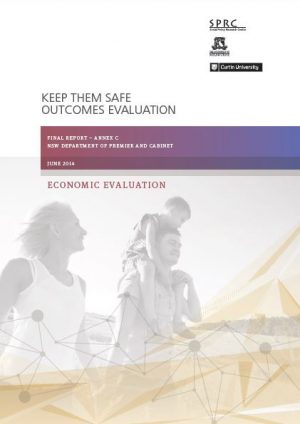 The purpose of the economic evaluation is to provide evidence of the cost-effectiveness of both the overall and individually funded aspects of KTS and to inform ongoing budgetary directions for child protection and wellbeing policy in NSW. A cost-effectiveness framework... Read article
The purpose of the economic evaluation is to provide evidence of the cost-effectiveness of both the overall and individually funded aspects of KTS and to inform ongoing budgetary directions for child protection and wellbeing policy in NSW. A cost-effectiveness framework... Read article
 The purpose of the economic evaluation is to provide evidence of the cost-effectiveness of both the overall and individually funded aspects of KTS and to inform ongoing budgetary directions for child protection and wellbeing policy in NSW. A cost-effectiveness framework... Read article
The purpose of the economic evaluation is to provide evidence of the cost-effectiveness of both the overall and individually funded aspects of KTS and to inform ongoing budgetary directions for child protection and wellbeing policy in NSW. A cost-effectiveness framework... Read article
Keep Them Safe Outcomes Evaluation: KTS Indicators Final Report
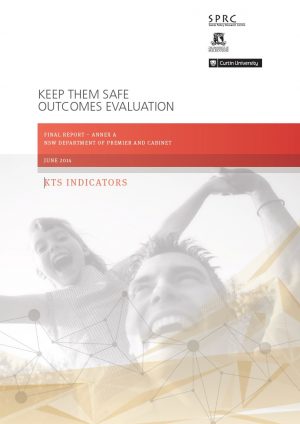 The NSW government has made a substantial investment towards protecting children from harm through its $800m KTS child protection initiative. KTS is arguably the most significant change to child protection policy in NSW since the introduction of mandatory reporting in... Read article
The NSW government has made a substantial investment towards protecting children from harm through its $800m KTS child protection initiative. KTS is arguably the most significant change to child protection policy in NSW since the introduction of mandatory reporting in... Read article
 The NSW government has made a substantial investment towards protecting children from harm through its $800m KTS child protection initiative. KTS is arguably the most significant change to child protection policy in NSW since the introduction of mandatory reporting in... Read article
The NSW government has made a substantial investment towards protecting children from harm through its $800m KTS child protection initiative. KTS is arguably the most significant change to child protection policy in NSW since the introduction of mandatory reporting in... Read article
Keep Them Safe Outcomes Evaluation: Spatial Analysis Final Report
 The NSW government has made a substantial investment towards protecting children from harm through its $800m KTS child protection initiative. KTS is arguably the most significant change to child protection policy in NSW since the introduction of mandatory reporting in... Read article
The NSW government has made a substantial investment towards protecting children from harm through its $800m KTS child protection initiative. KTS is arguably the most significant change to child protection policy in NSW since the introduction of mandatory reporting in... Read article
 The NSW government has made a substantial investment towards protecting children from harm through its $800m KTS child protection initiative. KTS is arguably the most significant change to child protection policy in NSW since the introduction of mandatory reporting in... Read article
The NSW government has made a substantial investment towards protecting children from harm through its $800m KTS child protection initiative. KTS is arguably the most significant change to child protection policy in NSW since the introduction of mandatory reporting in... Read article

